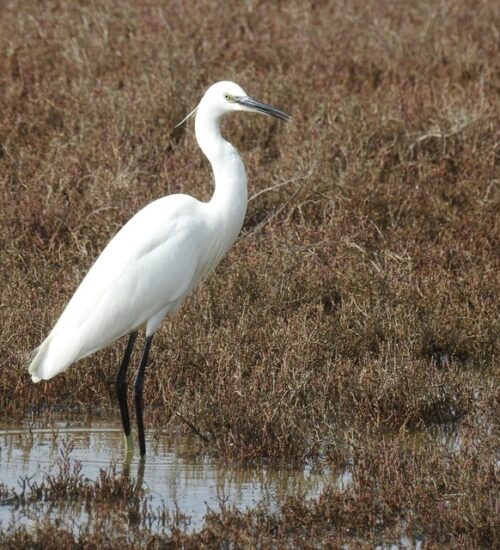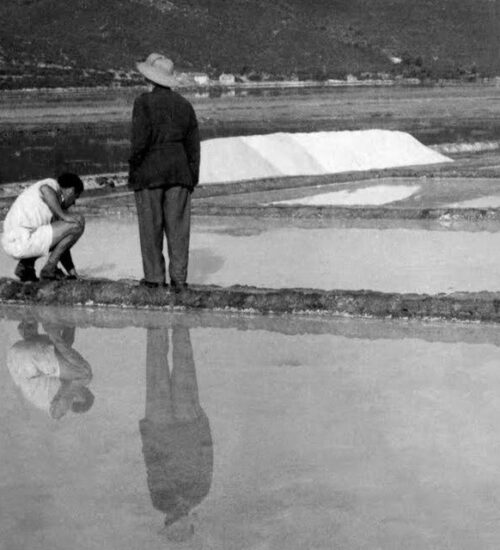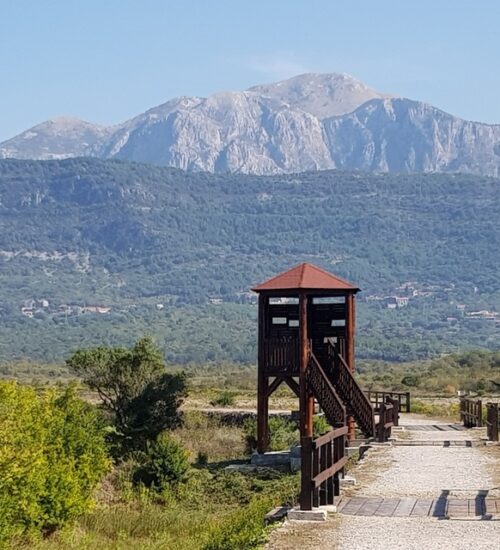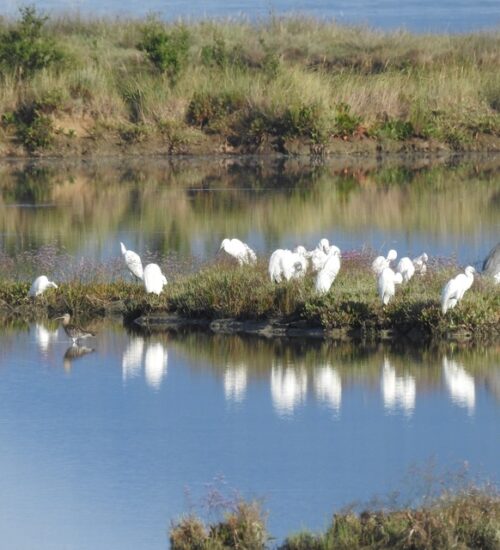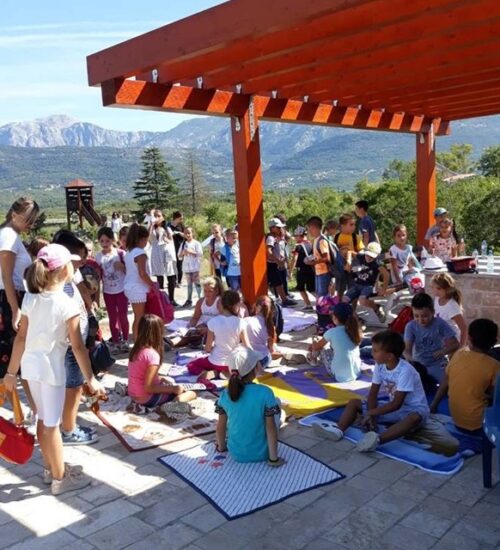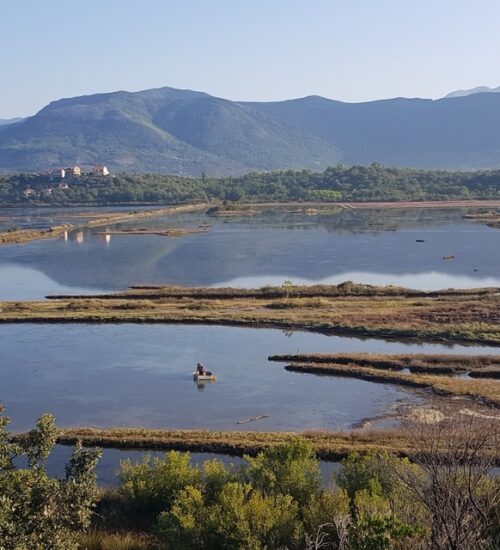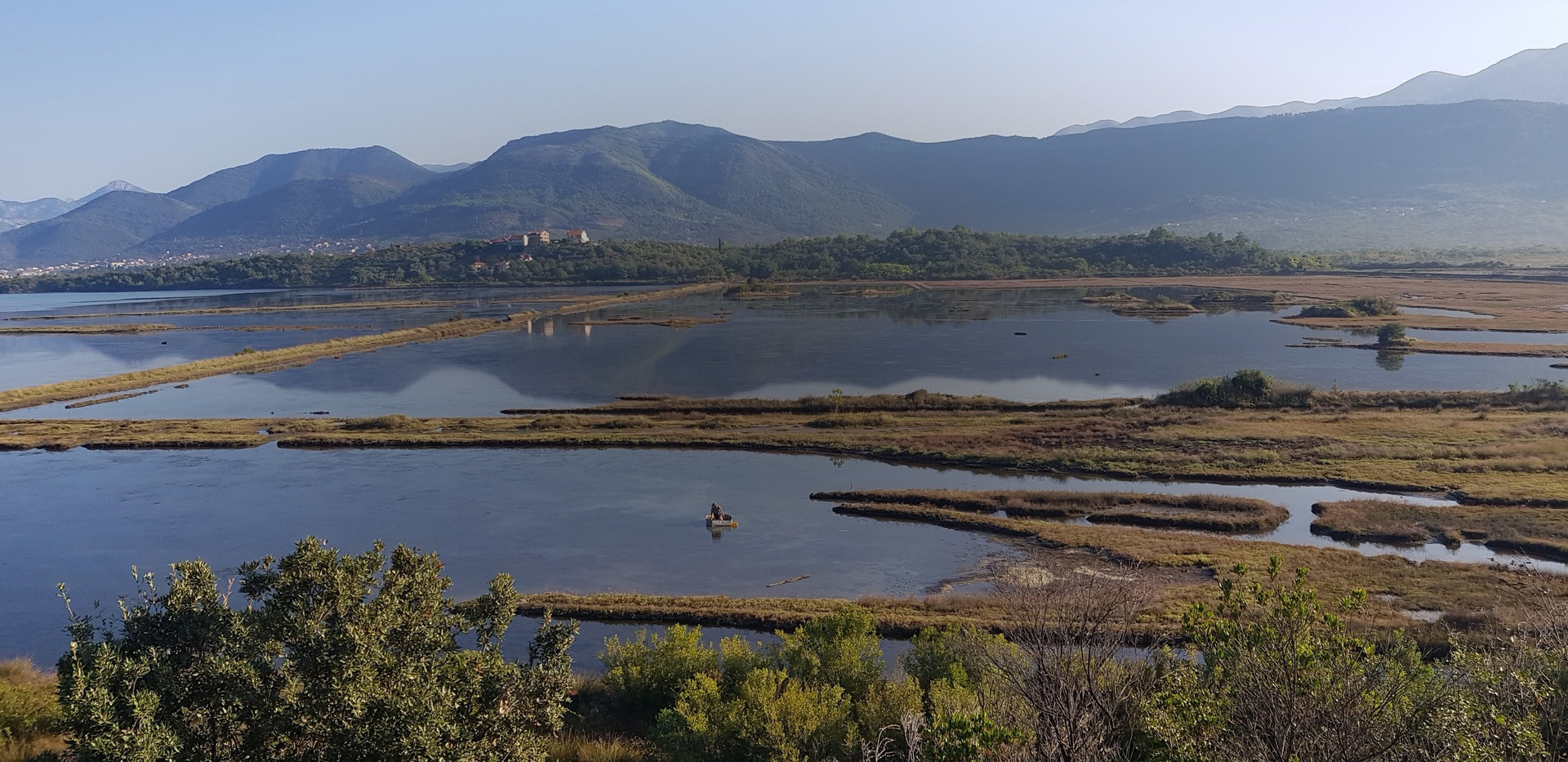


Location
Special nature reserve “Tivat Saline” (Tivatska Solila) is situated in marsh area of Tivat Bay between “Odoljenštica and Koložunja, comprising also underwater area “Jankove Vode” in Grbalj. The area of Solila was protected in 2008 as special nature reserve “Tivat Solila”, for the purpose of preserving rare, rarified and endangered plants and animal species, first of all ornithofauna and plant communities. This nature reserve has got surface of 150 ha.
Tivat Saline is one of the last habitats of halophyte vegetation on eastern part of Adriatic, and one of the key points on Adriatic migratory corridors for birds (Adriatic Flyway). Solila has been IBA area since 2009 – the area of international significance for birds dwelling, as well as Emerald habitat of Bern Convention. Since 2013 Solila reserve has been registered on the list of marshes of international importance according to Ramsar Convention. Since 2014 the reserve is managed by the Public Company for Managing the Coastal Areas of Montenegro “Javno preduzeće Morsko Dobro Crne Gore“.
History
This area has been created with deposits of sediment in the basin of the river Široka and Koložun, and work of man who gathered salt from the basins with sea water, with help of the sun and the wind.
One can assume, although there are no reliable historical data, that Ilirian Agravonit Tribe used salt that nature benevolently offered in Solila Valley, and that during Roman times salt pans could have been developed considering that agricultural estates were formed around the valley, which had need for continuous supply of this mineral.
In medieval period, agricultural development of coastal towns was based on gathering income from salt production. During the rule of Nemanjic Dynasty, Kotor was one the four salt squares (legal place for sale of slat). Although, according to certain sources, construction of salt pans is linked to the XIII century, Solila were first mentioned in the books of Kotor notaries in 1333.
In the second half of the XVIII century, Venetian Republic bans production of salt in small salt pans on Adriatic Coast, while in Austro-Hungarian period the salt pans do not function, and in the second half of the XIX century, Tivat – Krtole road was constructed on embankments going across Solila. At the end of the XIX century, there are first cadaster books with maps, where the purpose of the plot could have been seen, their titles and change of titles.
In the mid of the XX century, Tivat Municipality started with activities on new salt pans.
Based on the projects from 1956 and 1959 formed new salt pans where according to the statements salt was picked in two seasons (1963 and 1964). Old Austro-Hungarian road Tivat – Krtole was reshaped into main embankment of the salt pans and covered with stone blocks from local limestone. Between this and newly built parallel embankment of the reservoir on about 100m to the north, the remnants of the pool for the IV evaporation and the reservoir with crossing embankments are visible.
There are remnants of crystalized pools under the main sea facing embankment. Also, wooden poles have been preserved, which served for the formworks of discharging channels. Other part of the pool was planned on the location Poćećište, towards the airport. During 1960s, when new salt pans were set up, European markets started to be supplied with salt from North-African salt pans where the costs of production were much lower than in the northern shores of Mediterranean. It caused decline of 200 small traditional salt pans, and also Tivat Solila.
Nature
In addition to dominant Mediterranean climate with mild, but rainy winters, and warm summers, on Solila proper, there is also occasional impact of mountain climate which comes from surrounding slopes of the Lovcen Mountain. This kind of diverse climate affects development of plant and animal species at Solila. The most important type of vegetation in the area of abandoned salt pans are halophytes, the plants that grow on salt water and salty bottom. Solila is considered as one of last habitats of halophyte (salt water) vegetation on the eastern part of Adriatic.
Solila is one of rare remaining wet coastal habitats for birds. Due to abundant food in shallow waters, it is the habitat for birds (114) during winter time and resting area for migrating birds on the way from the Northern and Eastern Europe. Very common birds in shallow waters of Solila are cormorants, grebes, coots, and certain breeds of ducks, while snipes and certain breed of herons, such as grey, big white and small white heron regularly feed in the shoals of Solila throughout the year. Macchia, shrub and open areas in spring and autumn attract numerous species of smaller songbirds out of which the numerous and regular ones are wegtails, rock ptarmigans, stone chats, few species of swallows and certain species of birds of prey. Except for birds, the Solila is important habitat for numerous species of reptiles, amphibians and small mammals. In the area of special reserve there are 10 species of reptiles, and almost every identified reptile in the reserve is legally protected species in Montenegro. Besides reptiles, Solila is inhabited by amphibians (5), out of which the most significant rare protected species is smooth newt (Lissotriton vulgaris), which dwells only on Balkan Penisula.
Forest parts of the Solila, are excellent habitat and shelter for various species of mammals, whereas the most numerous are: bets, wild cats, foxes, etc. Solila can be considered as the area of animal species concentration, while the embankments with bushes can be considered as corridors.
Fauna of insects at the Solila is extremely rich that is proved by the results of 160 different insect species registered in the reserve.
Out of those existing insects, the special value have protected insects such as the butterfly “swallowtail” (Papilio machao), which is present in the Annexes II and IV of the Natura 2000 Network. Also, the dragonfly “Balkan Goldenring” (Cordulegaster heros), which is rare mediterranean species, as well as dragonfly „Eastern Spectre“ (Caliaeschna microstigma) which is present in the Annexes II and IV of the Natura 2000 Network of Protected Areas, and it is endemic species of Balkan Peninsula.
Construction of embankments for the needs of the salt pans in 1960s significantly changed circulation of the sea in inner parts of the area of today’s reserve, which was recognized as important hatchery for fish. Shallow sea in front of the Solila, as well as channels inside the reserve, are important hatchery for fish and cancers. Around 10 species of fish have been recognized in the reserve up to date, while 3 species of cancers inhabit the reserve, out of which the most significant is Mediterranean Mud Shrimp (Upogebia pusilla) which exists in the reserve in muddy salty bottom.
Sights
In immediate vicinity of the reserve, the first Kotor Bay Clay Industry “Krtoli” was constructed in the beginning of the XX century. In 1908 one part of the plot was situated in the area of old medieval Solila, which was bought by the factory for extracting the raw material – clay for factory production. Zones in which the clay was largely exploited are recognizable today because they are lower in relation to the remaining terrain and filled with water. Today, the elements of old factory can be seen: the structure which was used as turning station for the cable lift for transportation of clay from the Solila to the factory, and also the concrete foundations for the cable lift pillars. The first Kotor Bay clay industry operated until after Second World War.
Connectivity
Local road Tivat – Radovici takes you to the special reserve Tivat Solila, which is connected with Adriatic motorway, and therefore with surrounding towns of Budva, Tivat and Kotor. The reserve is 7km away from Tivat Airport, while it is 85 km away from Podgorica Airport.
Contact
Address:
Javno preduzeće za upravljanje morskim dobrom Crne Gore
Popa Jola Zeca bb
85310 Budva
Crna Gora
Telephone:
+382 33 452 709
+382 69 316 158
Web: www.morskodobro.com
Mail: rezervat.prirode.solila@gmail.com

